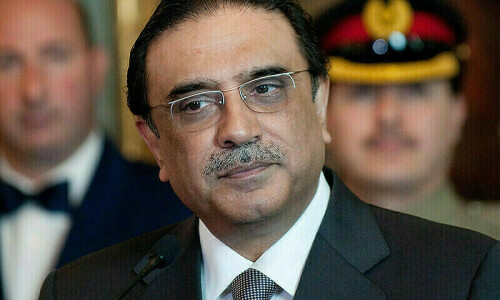The carnage Israel let loose in Gaza since July is a precursor of worse to follow. On Aug 4, Israeli Prime Minister Benjamin Netanyahu said: “This operation will only end when quiet and security is established for the citizens of Israel for a prolonged period.” Israel’s aim is to wipe out Hamas. The 72-hour ceasefire announced earlier means nothing and has ended.
Ahron Bregman, a former officer in the Israeli army, realistically warned last month that “soon after the guns fall silent, perhaps within a few months, the parties will resume the war”.
The reason for this cycle of mini-war is “the fact that the ceasefires which put an end to the repeated confrontation fail to tackle the underlying cause of the clashes which is the continuing Israeli occupation and the pain, suffering and humiliation it inflicts on the Palestinians in the occupied West Bank and the Gaza strip”.
Palestinians have been physically divided into two caged areas.
The latter is an open-air prison in which 1.8 million people live within 146 square kilometres. Of the 1.8 million, over 250,000 are in shelters.
Palestinians have been physically divided into two caged areas, the West Bank and Gaza. Physical separation has kept pace with the rise in Israel’s political demands. Gaza and the West Bank together comprise 22pc of Palestine. In 2000, Israel offered 80pc of the 22pc of the Palestinians’ homeland usurped in 1948.
Ariel Sharon offered a state on 42pc of the 80pc of 22pc of their homeland. Jewish settlements on the lands occupied since the war of 1967 have increased four-fold. There are now 350,000 of them in the West Bank and East Jerusalem.
Hamas won a landslide victory in the election to the Palestine Legislative Council on Jan 25, 2006 bagging 74 of the 132 seats to Fatah’s 45. A year later, when the two formed a government of national unity, the US and Israel insisted on Hamas’ ouster. The coalition broke up. A crippling embargo was imposed rendering it impossible for Hamas to govern Gaza.
The US initiated talks in July 2013, in which Mahmoud Abbas, Fatah’s leader, made vital concessions. But Israel demanded “complete control” over the occupied territories. He decided to heal the rift.
On April 23, 2014 Fatah and Hamas agreed to set up a government of technocrats headed by Abbas and to hold presidential and legislative elections within six months. Netanyahu immediately declared that Abbas “must choose. Does he want reconciliation with Hamas or peace with Israel?” He himself forged a coalition with right-wing parties such as Naftali Bennett’s Jewish Home.
In May, Israeli forces killed two Palestinian youths. In reprisal, Hamas allegedly abducted three young Israeli settlers. An “incremental genocide” by Israel followed, to use the Israeli scholar Ilan Pappe’s words. The US endorsed Israel’s stand in September 2010 that the Palestinians must recognise Israel as a Jewish state. Archival disclosures by Ahron Bregman in his book Cursed Victory show that the US was never a mediator. Then president Bill Clinton told prime minister Ehud Barak “I’ll back you … I’m your guy …” Israel’s nuclear arsenal was safe. Clinton showed his proposals to Israeli negotiators before presenting them to Yasser Arafat. The EU will not part company with the US on Israel.
But the Arab states were not particularly energetic in pressing Palestine’s case either. Israel’s foreign minister Abba Eban revealed in his memoirs Personal Witness that at Camp David, president Anwar Sadat “was thinking of Egyptian interests alone. His devotion to the Palestinian cause was perfunctory….”
The situation is far worse today as David Kirkpatrick reported in The New York Times recently from Cairo. Hamas, an offshoot of the Muslim Brotherhood, enjoys little support from leaders of the Arab states; with the exception of Qatar and Turkey. Iran’s support to Hamas is another factor.
Egypt leads “a new coalition of Arab states — including Saudi Arabia, the United Arab Emirates and Jordan — that has effectively lined up with Israel in its fight against Hamas, the Islamist movement that controls the Gaza Strip. That, in turn, may have contributed to the failure of the antagonists to reach a ceasefire even after more than three weeks of bloodshed”.
If that were all, one would despair of any future for the Palestinians. But there are avenues which promise results. One is Hamas’ renunciation of the rocket attacks which serve only to invite international censure. Instead, it could employ the tactics of peaceful protest so precisely enunciated by Gene Sharp in his books on The Politics of Non-Violent Action.
The most telling movement is BDS — Boycott, Disinvestment and Sanction — launched in July 2005 by 172 Palestinian civil society organisations. It calls for “non-violent punitive measures”. They include boycotts of Israel’s economy and institutions, withdrawal of foreign investment and sanctions against the state itself.
The writer is an author and lawyer based in Mumbai.
Published in Dawn, August 9th, 2014











































